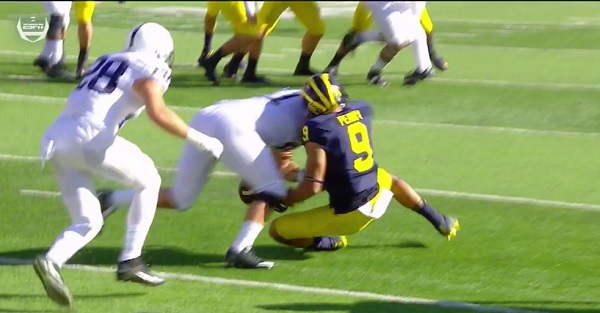Well the Big Ten is doing something right.
Videos by FanBuzz
On Saturday, Penn State linebacker Brandon Smith was ejected after one of the worst targeting calls we have seen since the rule was instituted. Smith, going for the ball on a potential interception, made incidental contact with the helmet of Michigan's Grant Perry.
On Wednesday, the Big Ten released a statement that the targeting penalty should have been reversed on replay and that Smith shouldn't have been ejected from the game.
Targeting occurs when a player takes aim at an opponent, whether the crown of the helmet is used to make forcible contact to the head or neck area of a defenseless opponent, or whether there is forcible contact to the head or neck area of a defenseless opponent that goes beyond making a legal tackle, a legal block, or playing the ball. In this particular play, the defender was making a legitimate attempt to get to the ball and, upon full review, the call of Targeting should have been reversed by the Replay Official.
It is good on the Big Ten to admit they got the call wrong, because a player got ejected when he was simply going for the ball.
RELATED: Pac-12 makes ruling on hit that KO'd Stanford's Francis Owusu
This is in stark contrast to a call made in the Stanford-UCLA game this past weekend, where what appears to be a textbook targeting penalty went uncalled by the officials. The Pac-12 later ruled that the hit on Francis Owusu — which literally knocked him out — was legal, with a very iffy explanation accompanying the statement.
The NCAA needs to do something about all these insanely inconsistent targeting calls. Obviously the system is never going to be perfect, but they should know there is a problem when the hit that results in the injury didn't draw the penalty.
